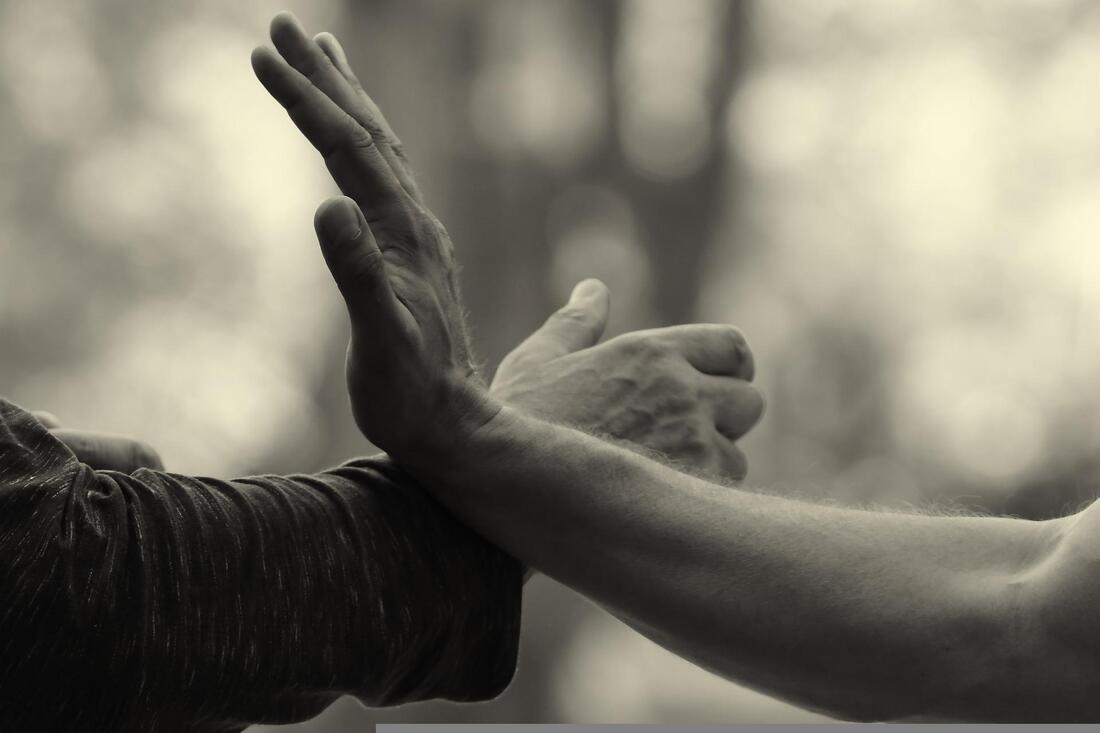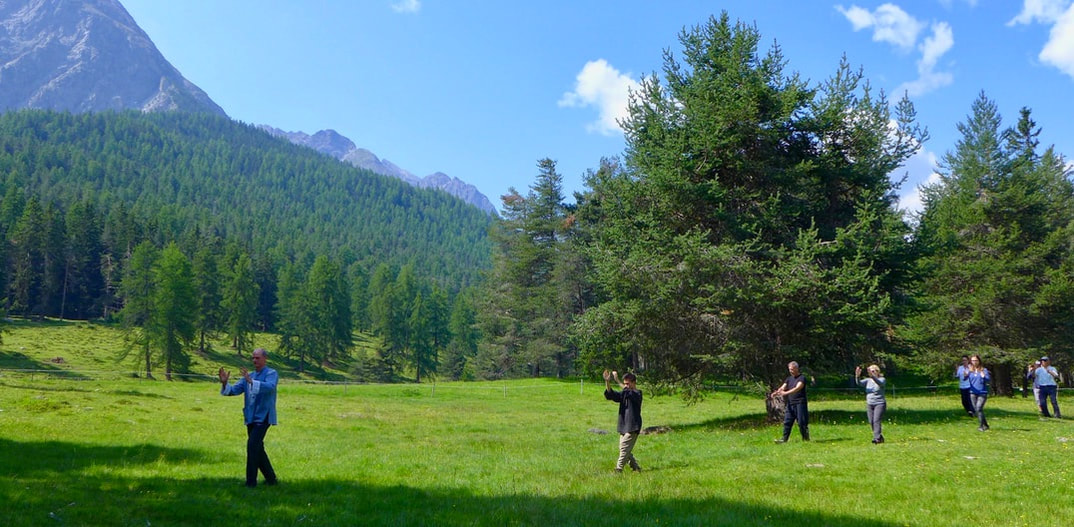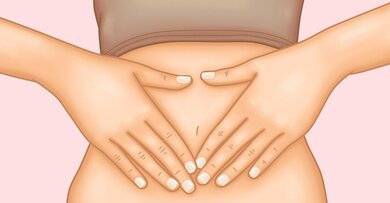The scene is set. Two Tai Ji Quan players are about to engage in a fight. They stand facing each other, neither begins, neither moves. They wait for the other to begin the attack. They are standing still, yet nothing is static. Qi is flowing, they are both sensing the subtle changes of the other and the environment. Through sensing, comes awareness. A Tai Ji Quan player will have an edge over the other, if her/his ability to sense is more acute. The moment one begins an attack, s/he has begun a forward, outward motion of energy, transmitting her/his information of her/his energetic distribution to the opponent, who will then utilize this energy to a counterattack. As such, no Tai Ji Quan player would make the first move, unless s/he is sure that her/his Qi is stronger than the other. Check out this clip from the movie "Hero," from many years back. It is not of Tai Ji Quan but demonstrates what I am trying to describe very well.
Tài Jí Qúan太極拳, sometimes written as Tai Chi Chuan (Wade-Giles romanization), translates as "Supreme Ultimate Fist." As you may have read in a previous post, Tai Ji Quan is a martial art with Chinese roots. It is estimated that 300 million people from at least 57 different countries practice Tai Ji Quan, making it one of the most practiced martial arts in the world. However, many have no idea that it a martial art, even those who practice it, as it has been transformed into a method of maintaining health or a form of dance. And why should it not be so? If something has the ability to adapt better in a changing environment over a period of time, then this adaptation will ensure its survival. This is something that has helped Tai Ji Quan to persist and thrive in the world, as people of all ages, children, adult and elderly practice this art with different emphasis and intentions set by its practitioner. Maybe it is even this skill to adapt to change, which is in itself a flexibility in being, that the Tai Ji Quan practitioner acquires through the practice of this art. One image my Tai Ji Quan teacher, Donald Rubbo, used to present was of bamboo. He described how bamboo is flexible and bends with the wind without breaking, as compared to rigid trees that may be strong but break due to the lack of flexibility under the strain of strong winds.
Tai Ji Quan is considered an internal martial art, meaning that the energetic work is done inside the body, versus an external focus where emphasis is placed on external strength. It is based on Daoist philosophy and the principles of Yīn-Yáng, which many of us know as the diagram with the black and white 'fish;' white fish with black eye and black fish with white eye. Master Huang, master of Tai Ji Quan, calligraphy and dance, describes the philosophy of Tai Ji and Yin-Yang very well through movement as well as intellectually. One of the Daoist ideas that is key to Tai Ji Quan and Chinese Medicine is the principle that we, all living beings living in this world, are connections between Heaven and Earth; the sacred trinity. If we learn to be and stay connected constantly to this Heaven-Earth power, we are always filled with Qi; thus, we are able to conserve our own personal Qi and Jing (life Essence) to maintain life in our bodies. A manifestation of Yin-Yang is in the form of the elements Fire and Water:
"Fire rises and water flows down. Water can put fire out when placed on top. This is reversing. It is a natural law that never changes. However, when the water flows down and you put your pot under it to stop it from reaching its extreme limit, the result is the boiling of water. This is called Yin-Yang reversal theory that allows one to make use of the natural laws. The T'ai Chi boxing system is based on this reversal theory, which is used in every aspect of the skill." (Kuo, Guttman, 1994, p.1)
Tai Ji Quan applies these philosophical principles into movement and through practicing these movements regularly, we begin to embody these principles in living our daily lives.
Going back to that first scene in which I described the two players; my teacher used to emphasize to us to 'play' Tai Ji Quan when we got too serious thinking and trying to make the correct form or application. We learned to move slowly but also quickly, when it was needed. In moving slow, one becomes aware of the subtle changes in weight distribution on the different aspects of the feet; thus aiding in balance training. Also, the awareness of the space around oneself, the elements in the environment and that a gentle flick of the finger, when one is connected to her/his Dān Tían, can move boulders. One aspect of Tai Ji Quan is form training, Tào Lù, where one performs the empty-hand or weapon form without contact, and if so it is choreographed. This is how many people practice Tai Ji Quan, especially if it is for health and it works on the basic form. Tùi Shǒu is Pushing Hands; this is the application of the form with contact to another practitioner but only to push the hand to uproot her/his stance, not to strike, punch or hurt. Another two aspects are the Nèi Gōng and Qī Gōng, which translate as "internal work" and "Qi work" respectively. These refer to breathing techniques, meditation, awareness training, meridian stretching as well as stillness practice. For me these are the most important aspects of the practice because they work on the unseen, deeper connections of the individual to Heaven-Earth and the clarity of mind to dis/engage in a confrontation. With stillness in body, the mind learns to become still but the Qi flows relentlessly.
Reference
Kuo Lien-Ying/ translated by Guttmann (1994): The T'ai Chi Boxing Chronicle. Berkeley, CA, USA: North Atlantic Books
Image by Ron on Pixabay





 RSS Feed
RSS Feed